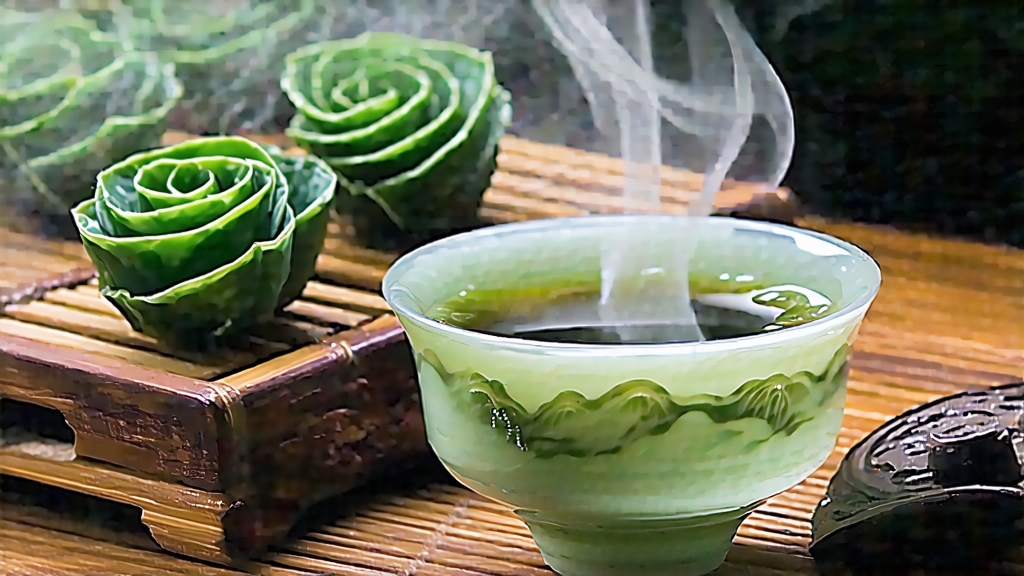
Tucked between the Yangtze River and the vast mirror of Lake Tai, the Dongting mountain range in Jiangsu Province guards a tea so delicate that one gram contains roughly one hundred downy tips. Locals call it Biluochun—“Green Snail Spring”—a name coined during the Kangxi era (1662-1722) when the Emperor, startled by its startling fragrance, rechristened the original “Xia Sha Ren Xiang” (“Scary Fragrance”) with a more poetic title that celebrates both its curled shape and the season of its birth. For three centuries the tiny spirals have remained among the first ten offerings of China’s imperial tribute list, and today they still rank at the very top of every authoritative roster of green teas.
History and terroir
The story begins in the fruit-laden microclimate of Dongting’s two peaks, Dongshan and Xishan. Here, peach, plum, apricot and loquat trees interlace with tea bushes, their simultaneous spring bloom perfuming the nascent leaf. Night moisture rising from Lake Tai meets cool mountain air, creating a 75-85 % humidity blanket that forces the plant to grow slowly, stacking amino acids and fragrant volatiles. Such conditions are impossible to replicate at lower elevations; move the same cultivar even ten kilometers west and the cup loses its signature “flowery-fruit” note. Historical gazettes record that monks from the Ming-dynasty Gupeng Temple first trained the bushes along stone terraces in the 14th century, selecting only the smallest-leeded clones that thrived in sandy, slightly acidic pumice soil. Their gentle Buddhist ethic—no pruning after Grain Rain, no picking after the fifth lunar month—still governs sustainable practice on the mountain today.
Cultivars and grades
Although the term Biluochun is legally protected within Suzhou prefecture, two distinct botanical varieties dominate: the local “Dongting Small-Leaf” (Camellia sinensis var. sinensis cv. Dongting Qunti) and the later-introduced “Fuding Da-Bai” tips transplanted from Fujian. Pure-plot Dongting Qunti delivers the most complex cup, but yields only 300 g of finished leaf per mu (1/15 hectare). Consequently seven grades exist, differentiated by picking window and tip-to-leaf ratio: Supreme First Grade (Cha-Wang) must be 100 % single buds harvested before Qingming festival; First Grade allows one bud plus one just-opened leaf; lower grades progress to one-and-a-half or even two leaves, harvested up to Guyu. International buyers often encounter “Suzhou-style” Biluochun made in Sichuan or Guizhou; while visually similar, the cup lacks the lake-cooled sweetness and finishes with a blunt vegetal bite.
Plucking ritual
Work begins at 5 a.m. when mountain dew still weighs down the tiny buds. Pickers—predominantly women who have inherited fingertip technique from their grandmothers—work with thumbnail length precisely trimmed to avoid bruising. The daily quota for an experienced hand is barely 500 g of fresh leaf, enough to yield 100 g of finished tea. Baskets are woven from thin bamboo strips precisely because plastic would “sweat” the leaf. Every thirty minutes the harvest is carried to the base station; any delay longer than two hours oxidizes the edges, flattening the apricot aroma into a generic grassy note.
Kill-green: the 3-minute border between hay and heaven
Within minutes of arrival the leaf is tumble-fired in drums set at 280 °C for exactly 90 seconds, a step locals call “touching the dragon’s breath.” The goal is to halt oxidative enzymes while preserving the silvery pubescence that will later lend the liquor its downy shimmer. Masters judge readiness by ear: when the rustle of leaf against steel shifts from moist hiss to dry whisper, they yank the drum lever. A miscalculation of ten degrees or ten seconds turns the delicate tips into yellow hay, worth a tenth of the price.
Spiral shaping: the wrist-born signature
While still at 60 °C the leaf passes to the most artistic stage—spiral kneading on a cast-iron pan brushed with the lightest film of Dongting mountain tea-seed oil. Craftsmen curl their palms to form a loose cage, rolling the leaf forward and backward 38-42 times per minute.